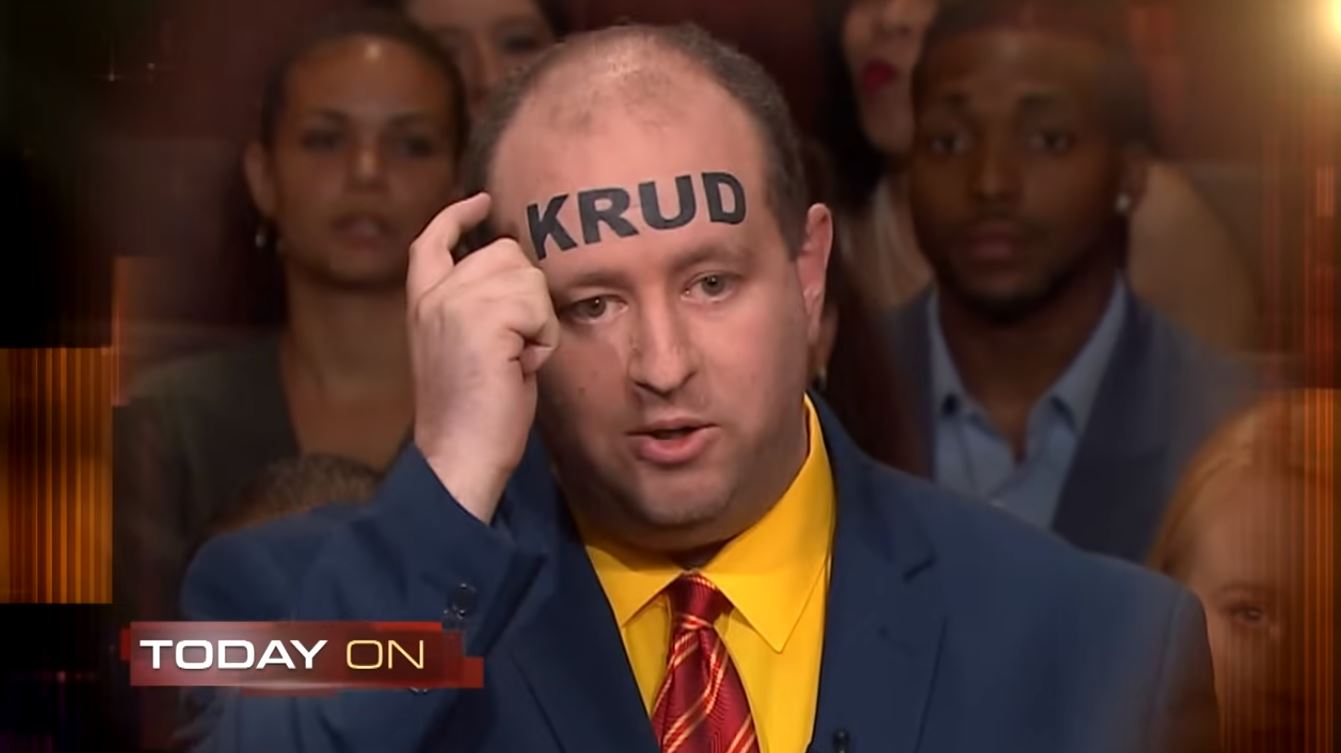After watching the Personal Injury Court on YouTube, the internet is abuzz with speculation as to whether the “Krud Tattoo” lawsuit is real or fake.
Sorry to disappoint you, but the Personal Injury Court is a scripted television show. The plaintiffs and defendants are actors who deliver a semi-scripted version of the events.
“Personal Injury Court” uses videos, testimony, accident reconstruction, and eyewitness accounts to determine who is liable for the injuries in each case.
“I wouldn’t say the terms scripted or actors,” declared executive producer David Armour, who is also in charge of the Midtown Georgia Public Broadcasting studios’ “Paternity Court,” “Couple Court,” and “Personal Injury Court.”
“I consider it more ripped from the headlines. These are real stories. It’s based on real legal principles.”
The Controversy
The incident where a man decided to sue a radio station called KRUD and its DJ, better known as Cyrus Jones or ‘Crazy Cyrus’ since the man had the call letters from that station tattooed on his forehead at one point or another, might make people think that this story is a work of fiction.
The event which was a part of the April Fool’s Day event has had destructive implications for Bell’s career, both personally and professionally and has created passionate litigation proceedings.
For a narration of the events, viewers can watch a video from the YouTube channel, Personal Injury Court, titled “April Fool’s Prank Leaves Man With Tattooed Forehead! | Full Episode.” He participated in the show with the expectation of winning the $250,000 needed to pay off the mortgage of his parent’s house which was up for auction.
However, the fight ended up being just a stunt and Bell was left with a scar that was not easily erasable.
The Lawsuit
The civil action suit against Bell also claims that the success of the radio station and Crazy Cyrus enticed Bell, leading him to make poor decisions that resulted in job loss and the end of his relationship. Later in the court case, Bell presented records demonstrating that he called the station on the same day as the show to verify his suspicions about the stunt. The station allegedly directed him to their website, where he found instructions to be the first to get the tattoo.
The judge said he was shocked at how brazen the radio station’s prank was and took time to refresh their memory regarding outrageous promotions by the KRUD such as afloat in pigs’ feet and bridal gown drag race. In this case, the defendants pointed out that Bell should have known that it was a prank, but the judge cited the station’s outrageous history of stunts and behaviour and deemed their actions reckless.
In another segment of the video, famous comedian and radio show host, Ricky Smiley explained how such pranks affected society in general. He discussed the duties of the radio hosts and the requirement of getting the consent of the station before performing pranks that could be detrimental. Smiley apologised to Bell and said that the fans know that pranks are often pulled in jest, based on the reactions on social media.
The court case also explored the details of the extent of harm to Bell who described the physical and monetary ramifications of the Krud tatto prank. In Bell’s case, this reflected an actual negative impact of a careless action because aside from emotional suffering, he incurred actual damages such as potential expenses for tattoo removal surgery.
Conclusion
In conclusion, the judge decided in Bell’s favour and granted him $510,000 for future medical costs, pains and suffering. The ruling has focused on responsibility in media promotion and the safety of people, including avoiding dangerous prank calls.
The case should warn that even harmless jokes can dramatically change people’s lives. It also teaches important lessons about entertainment and responsibility in the media.













![TikToker Peller Hospitalised After Suicide Attempt Following Breakup With Girlfriend Jarvis [VIDEO]](https://bestlagos.ng/wp-content/uploads/2025/12/Blank-2-Panel-Portraits-Comic-Strip_20251214_173158_0000-350x250.jpg)

![Terrifying Uber Ride: Lady Panics After Discovering Broken Door Lock Mid-Trip [VIDEO]](https://bestlagos.ng/wp-content/uploads/2025/12/White-Modern-Fashion-Trends-Photo-Collage_20251211_085520_0000-350x250.jpg)









